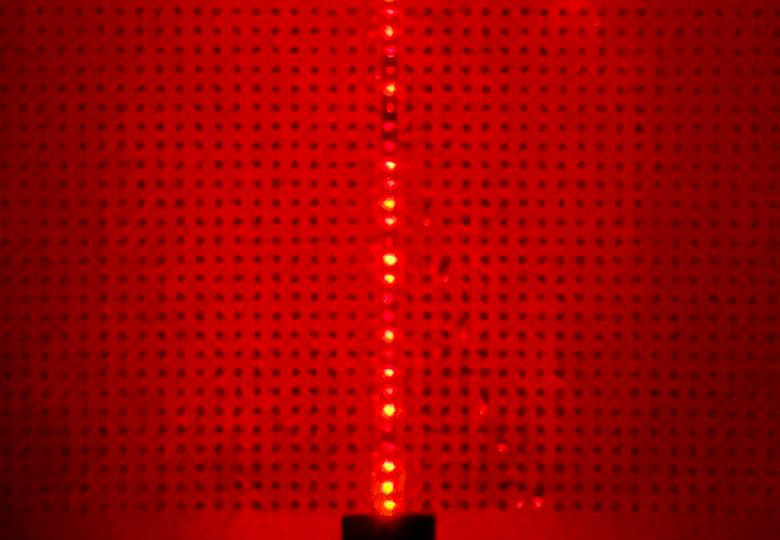News: LEDs
3 January 2025
Polar Light achieves 625nm-wavelength red pyramidal micro-LED
Polar Light Technologies (PLT) — which stems from research by founder professor Per-Olof Holtz and his team at Linköping University (with support from Sweden’s innovation agency Vinnova) — has fabricated 625nm-wavelength red-light-emitting pyramidal micro-LED based on its non-etching bottom-up concept. The firm has hence achieved red, green and blue pyramidal micro-LEDs using the same material compound.

The pyramidal design has the ability to be manufacturable while maintaining what is said to be excellent micro-LED performance, laying the foundation for monolithic RGB displays, enabling spatial computing and next-generation panel displays.
Red without compromise
Blue and green micro-LEDs have been in the market for years, but reaching the red part of the spectrum has been difficult due to fundamental challenges in the material properties. There are several workarounds or alternatives for achieving red but they all come with some compromises, such as efficiency, manufacturability or the need to integrate with other material systems.
“Pursuing Polar Lights’ innovative pyramidal LED concept has been about overcoming those challenges without compromises,” says chief technology officer Lisa Rullik. “We have succeeded in realizing the red-emitting micro-LEDs based on our innovative pyramidal structure.”
Unique pyramidal structures
Polar Light Technologies’ micro-LED is composed of pyramid shapes that are built with a novel bottom-up approach, a technology that is said to provide unique benefits:
- The inevitable strain in the lattice-mismatched indium gallium nitride (InGaN/GaN) structures is reduced, which is important to be able to manufacture blue, green and red micro-LEDs with the same material system, i.e. to fabricate monolithic RGB.
- It gives a unique possibility to integrate the frontplane with a backplane.
- No etching is needed, which means that performance is maintained also for smaller dimensions since no etching damage occurs. It also enables even sub-µm LEDs, i.e. nano-LEDs.
- It is easier to manufacture and integrate with CMOS and TFT
- The emission cone is narrow: there is a Lambertian light lobe from the emitter, which is important for micro-projectors.
Polar Light says that, with these unique benefits, its micro-LEDs solve key challenges in bringing the technology to the market.
Performance, manufacturability and nano-LEDs
Polar Light claims that its same-compound-based micro-LEDs offer high performance and excellent manufacturability, as well as very small dimensions and a narrow emission cone. The technology also opens up nano-LED applications – as soon as the rest of the display technology catches up.
“Our technology addresses micro-LED challenges in a way that has never been done before,” claims CEO Oskar Fajerson. “Now we’re moving towards commercialization of this groundbreaking technology, focusing on putting products on the market.”
Polar Light partners with Finetech to connect pyramidal GaN micro-LEDs
Linköping micro-LED spin-off Polar Light Technologies appoints CEO









